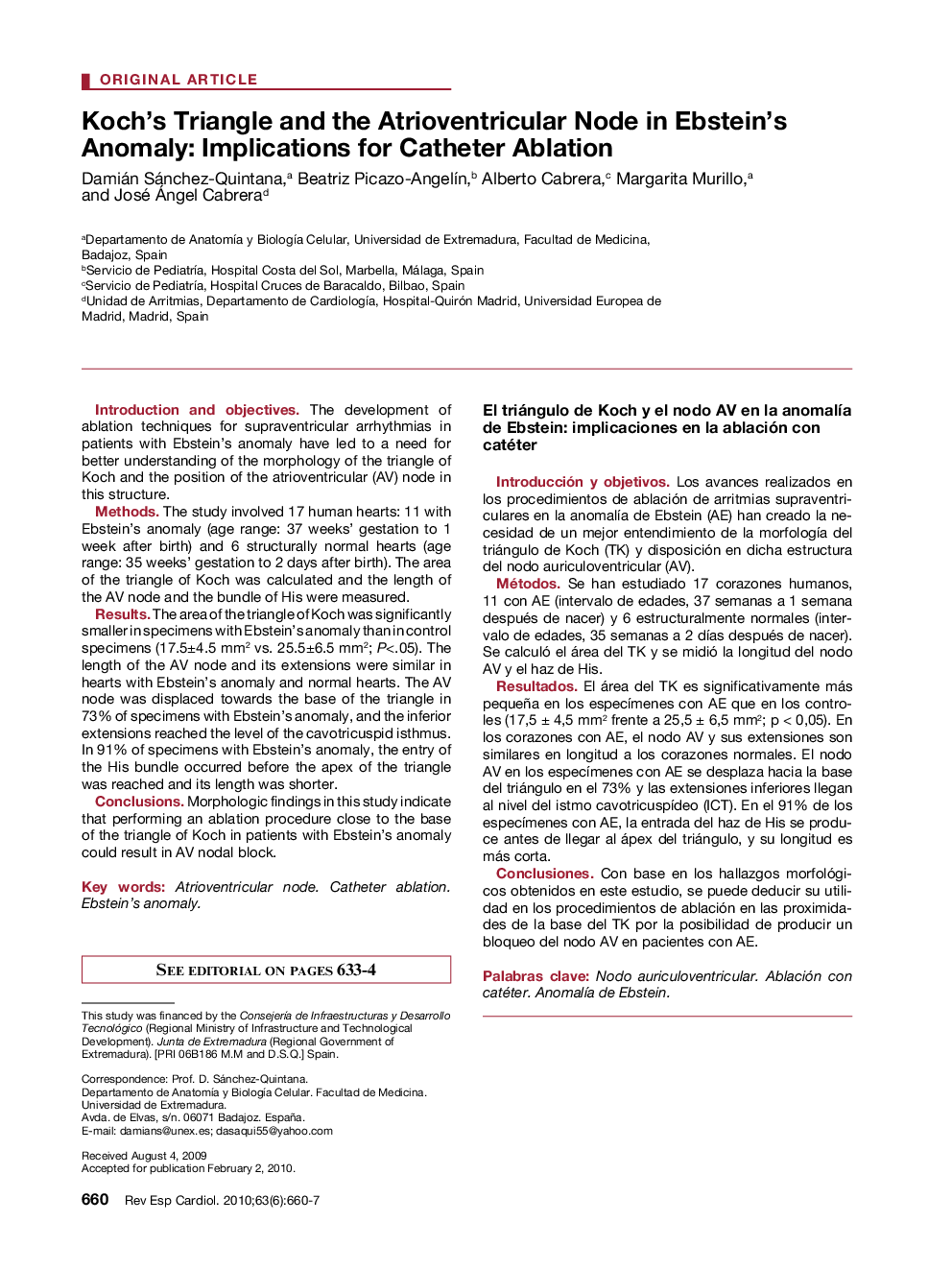| Article ID | Journal | Published Year | Pages | File Type |
|---|---|---|---|---|
| 3018477 | Revista Española de Cardiología (English Edition) | 2010 | 8 Pages |
Introduction and objectivesThe development of ablation techniques for supraventricular arrhythmias in patients with Ebstein's anomaly have led to a need for better understanding of the morphology of the triangle of Koch and the position of the atrioventricular (AV) node in this structure.MethodsThe study involved 17 human hearts: 11 with Ebstein's anomaly (age range: 37 weeks’ gestation to 1 week after birth) and 6 structurally normal hearts (age range: 35 weeks’ gestation to 2 days after birth). The area of the triangle of Koch was calculated and the length of the AV node and the bundle of His were measured.ResultsThe area of the triangle of Koch was significantly smaller in specimens with Ebstein's anomaly than in control specimens (17.5±4.5 mm2 vs. 25.5±6.5 mm2; P<.05). The length of the AV node and its extensions were similar in hearts with Ebstein's anomaly and normal hearts. The AV node was displaced towards the base of the triangle in 73% of specimens with Ebstein's anomaly, and the inferior extensions reached the level of the cavotricuspid isthmus. In 91% of specimens with Ebstein's anomaly, the entry of the His bundle occurred before the apex of the triangle was reached and its length was shorter.ConclusionsMorphologic findings in this study indicate that performing an ablation procedure close to the base of the triangle of Koch in patients with Ebstein's anomaly could result in AV nodal block.
Introducción y objetivosLos avances realizados en los procedimientos de ablación de arritmias supraventriculares en la anomalía de Ebstein (AE) han creado la necesidad de un mejor entendimiento de la morfología del triángulo de Koch (TK) y disposición en dicha estructura del nodo auriculoventricular (AV).MétodosSe han estudiado 17 corazones humanos, 11 con AE (intervalo de edades, 37 semanas a 1 semana después de nacer) y 6 estructuralmente normales (intervalo de edades, 35 semanas a 2 días después de nacer). Se calculó el área del TK y se midió la longitud del nodo AV y el haz de His.ResultadosEl área del TK es significativamente más pequeña en los especímenes con AE que en los controles (17,5 ± 4,5 mm2 frente a 25,5 ± 6,5 mm2; p < 0,05). En los corazones con AE, el nodo AV y sus extensiones son similares en longitud a los corazones normales. El nodo AV en los especímenes con AE se desplaza hacia la base del triángulo en el 73% y las extensiones inferiores llegan al nivel del istmo cavotricuspídeo (ICT). En el 91% de los especímenes con AE, la entrada del haz de His se produce antes de llegar al ápex del triángulo, y su longitud es más corta.ConclusionesCon base en los hallazgos morfológicos obtenidos en este estudio, se puede deducir su utilidad en los procedimientos de ablación en las proximidades de la base del TK por la posibilidad de producir un bloqueo del nodo AV en pacientes con AE.
